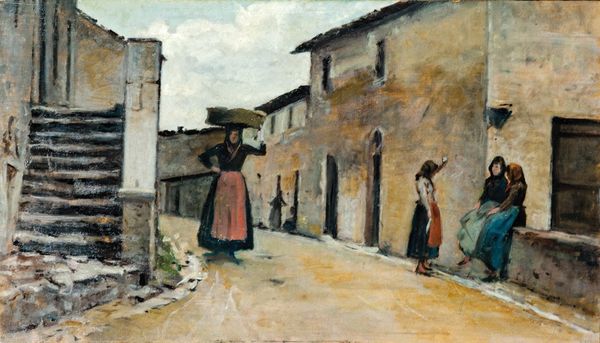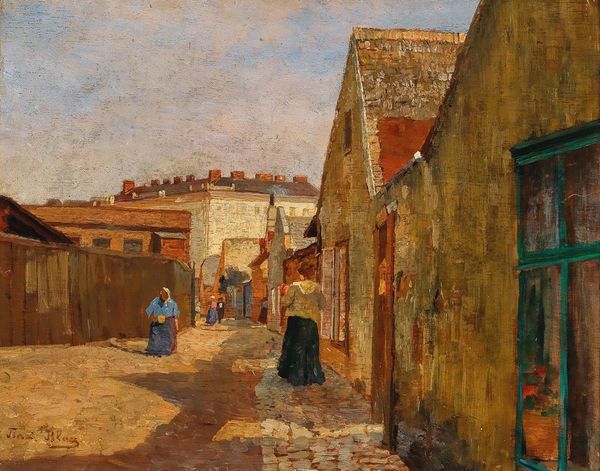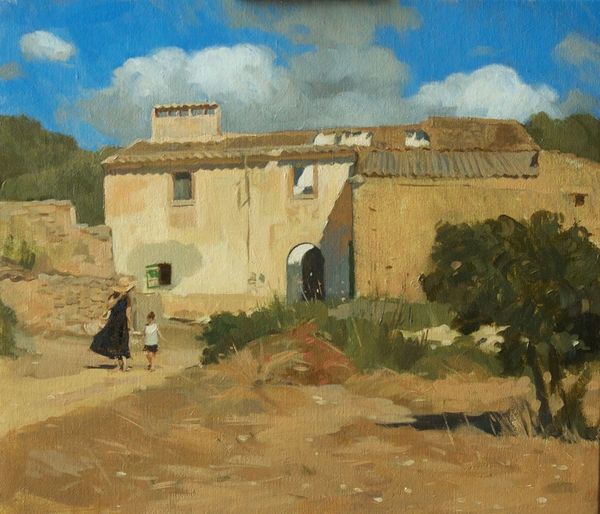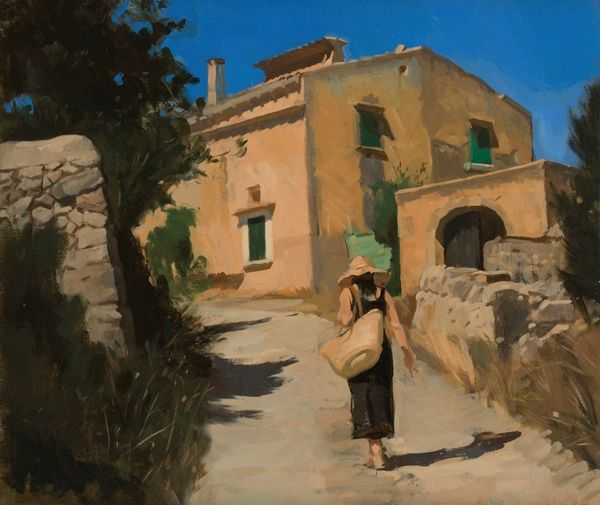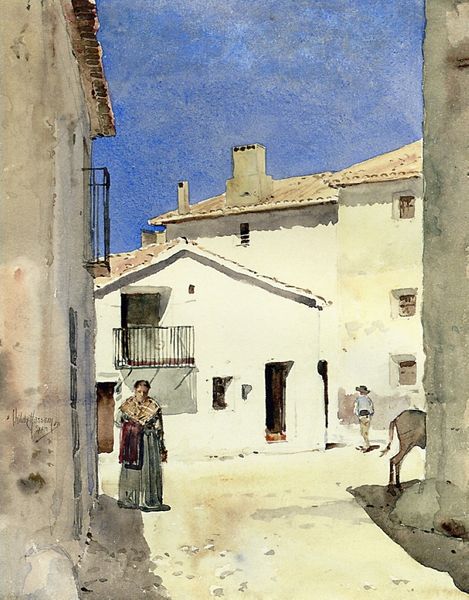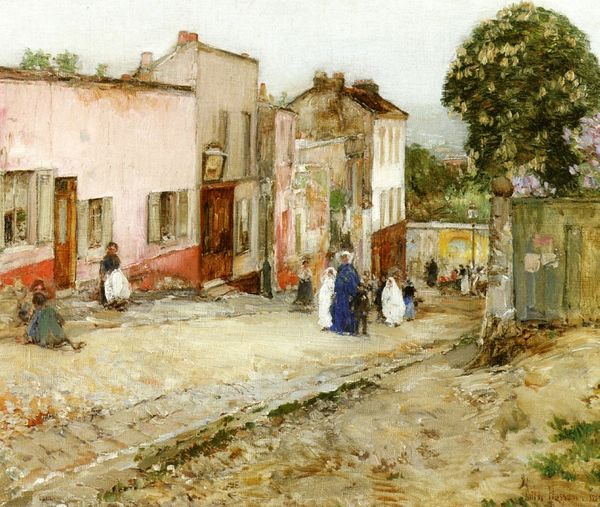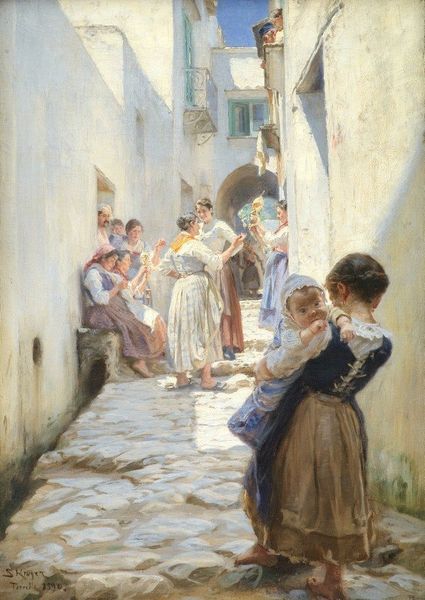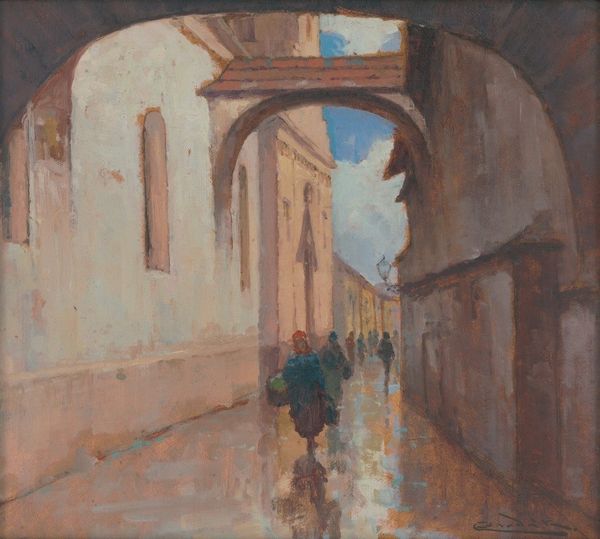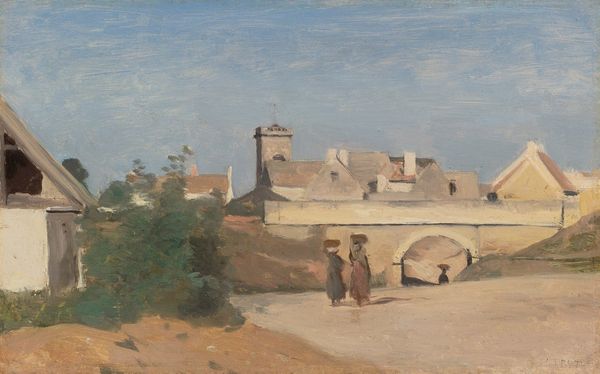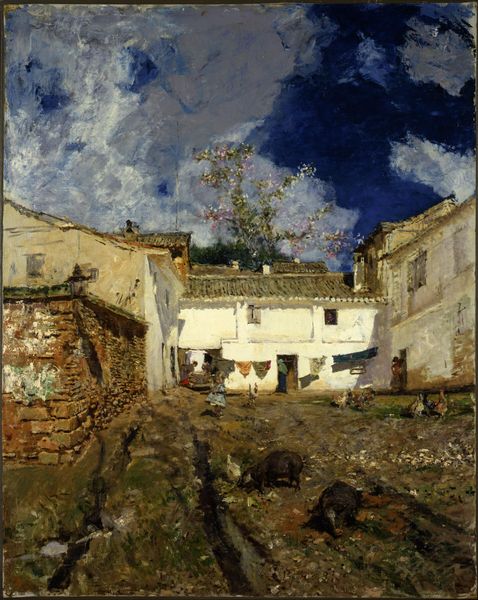
painting, plein-air, oil-paint, canvas
#
street-art
#
painting
#
impressionism
#
plein-air
#
oil-paint
#
landscape
#
oil painting
#
canvas
#
cityscape
#
genre-painting
#
italian-renaissance
#
watercolor
#
fine art portrait
#
realism
Dimensions: 73 cm (height) x 77.5 cm (width) (Netto)
Editor: So, here we have Henry Lørúp’s “Palazzo Ferrante i Civitá d'Antino,” painted in 1890. It’s an oil on canvas depicting a sun-drenched street. I'm struck by how the architecture seems to almost blend with the figures in the foreground. What layers do you see in this piece? Curator: This painting offers a glimpse into the complex intersections of gender, labor, and representation within late 19th-century European art. We see these figures, presumably local women, rendered within the painterly traditions of plein air. How do you see their representation functioning within the broader narrative of the Italian landscape as seen through a Northern European gaze? Editor: I guess they almost seem placed *within* the landscape, like elements of it, but still separate. Curator: Exactly. Think about who had the power to represent whom. Lørúp, a Danish painter, is depicting Italian women in their domestic sphere. It prompts us to ask: Whose story is really being told here? Is this painting an attempt at capturing authentic Italian life, or is it filtered through the artist's own cultural lens and perhaps a desire for the exotic or picturesque? Consider, too, the inherent power dynamics at play when artists from dominant cultures represent marginalized groups. Editor: That’s fascinating. So the painting isn’t just about the beauty of the Italian landscape; it’s about the relationship between the artist and his subjects and all the baggage that comes with that. Curator: Precisely. The composition directs our gaze but it also directs the narrative, highlighting the artist's choices and the sociopolitical implications embedded within those choices. What might it mean that the women are static and arranged as landscape accents rather than active participants in their own narrative? Editor: I see that the perspective opens a new level of inquiry for me. It moves the artwork into conversations beyond aesthetic beauty. Curator: Indeed, art serves as a mirror reflecting not just the world, but also the complex social and political landscapes within which it's created and viewed.
Comments
No comments
Be the first to comment and join the conversation on the ultimate creative platform.

